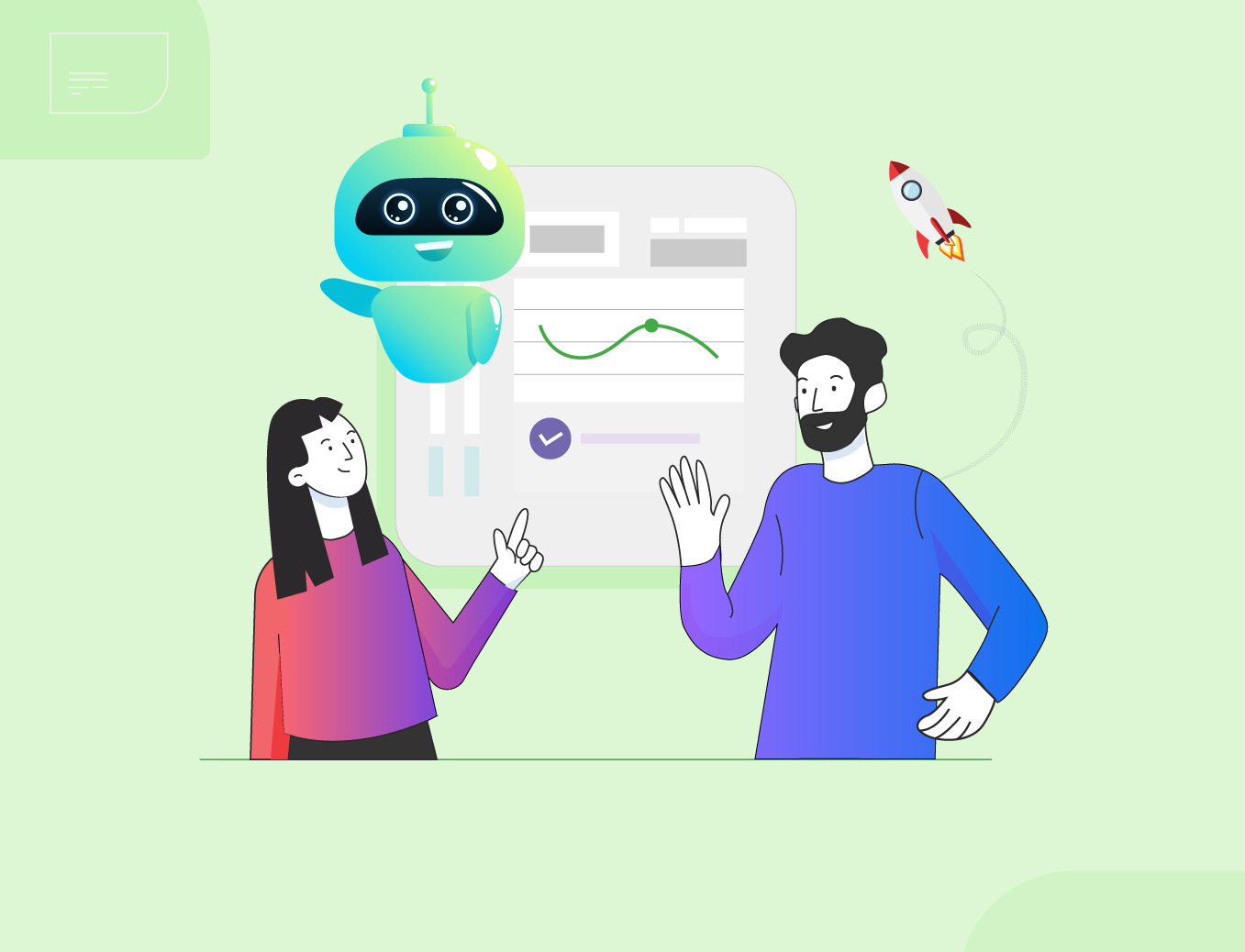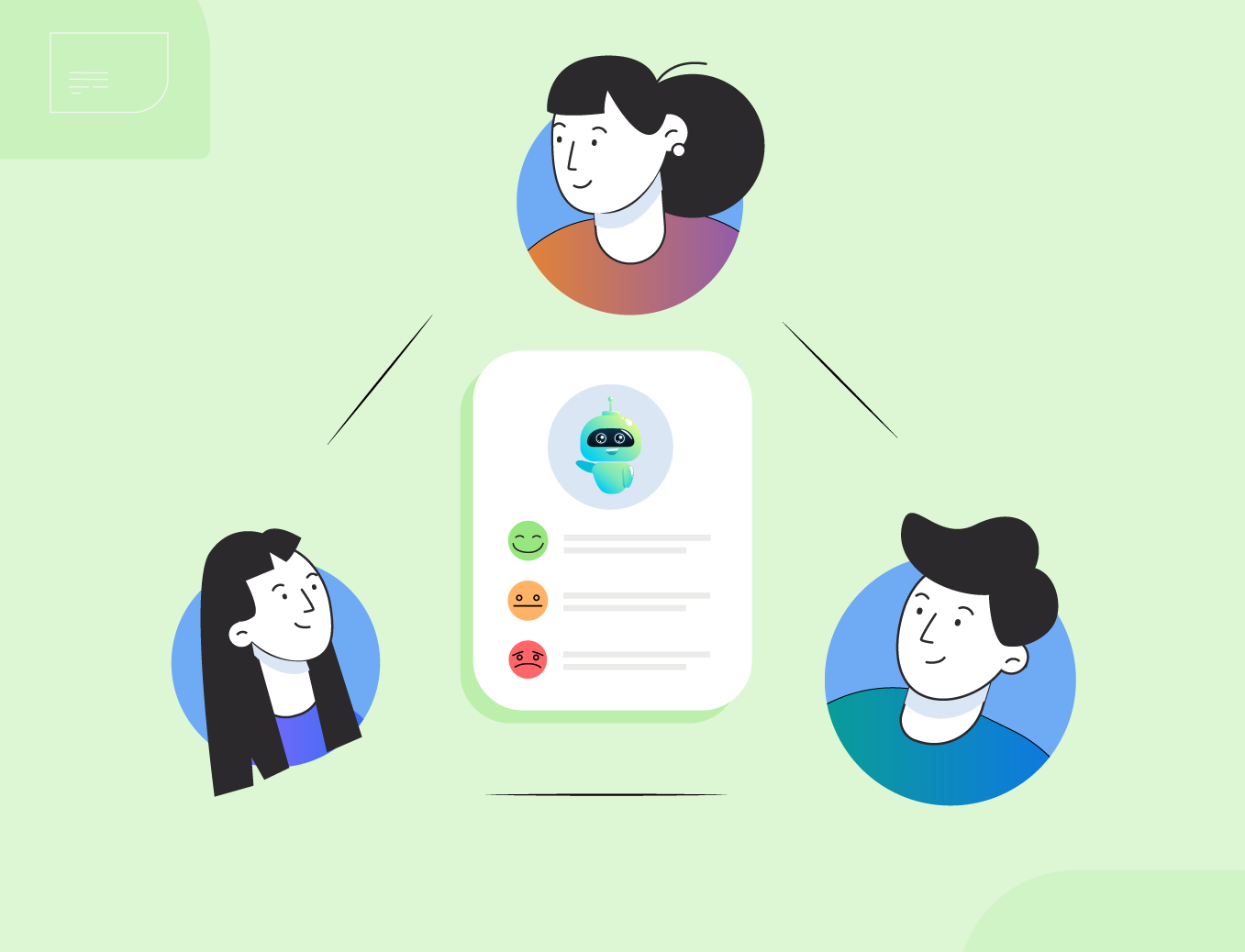Several studies have proved that a positive employee experience is directly related to increased engagement and loyalty to an organization.
In the era of remote and hybrid work culture, organizations that continue to use a traditional method to construct their daily processes, answer employee inquiries, release surveys, and conduct employee engagement activities may not see the desired impact of their efforts. This is owing to the amount of manual effort required in completing the tasks that often leads to monotony, delays and the inability to improve employee engagement.
That’s why leading organizations can be seen adopting automation platforms to implement their employee engagement strategies.

Intelligent automation boosts employees’ productivity and allows them to be more successful by delegating many repetitive tasks to automated workflow tools and systems. This leads to giving them more room for creativity and innovation at work, resulting in better experiences and higher employee engagement.
In this blog, we have discussed all the hows and whys that you may encounter while implementing intelligent automation to improve employee engagement. Let’s delve into why automation is the key to better employee engagement and how to ensure your employees enthusiastically adopt new technologies.
How automation helps to improve employee engagement?

Automation is changing how organizations work across different departments. But today, we are also seeing leading companies take to the technology to improve the underlying factors that determine their success – namely, aspects like employee engagement. Here’s how:
1. Helps build a streamlined feedback system
Employee feedback is key to determining the success or failure of your employee engagement plan. But collecting and processing employee feedback manually is often a huge burden for the HR department and managers. It consumes immense time and resources that could otherwise be used for more productive tasks. Moreover, the overwhelming amount of feedback can cause your HR professionals to overlook some critical insights like the sentiment behind the feedback shared.
Automated feedback systems are an effective method to improve employee engagement as it help streamline the collection and analysis process so that HR managers can pinpoint each employee’s concerns and identify areas where they need improvement or support. They also leverage advanced technologies such as AI for sentiment analysis which further helps HR managers understand the ‘why’ behind feedback to implement tactics that are employee-centric.
2. Reduces repetitive tasks and exasperation
When it comes to setting up and executing HR processes at scale, there are several things that managers need to do repeatedly – onboarding documentation, orientation, employee reviews, and other functions. The manual approach often leads to frustration amongst HR and the employees, creating back-and-forth email communications and delays. This ultimately results in a drop in employee engagement rates.
This is where automation to address frequently asked questions or documented information can help create a simplified process. Employees can then get answers to their concerns, queries and information in real-time without having to wait on HR managers for a response.
Here’s a great example of how Coca-Cola Vietnam uses employee engagement automation to streamline HR functions:
Coca-Cola’s HR executives faced a significant problem receiving multiple employee queries regarding concerns, leave requests, payroll, etc. This caused the executives to give up their valuable time attending to routine questions which could otherwise be used for more strategic work.
With Leena AI, they found an automation platform to auto-resolve routine employee queries and get more productive and create an incredible overall employee experience across the organization.
3. Streamlines hiring and onboarding process
The current hiring processes face the brunt of unintended biases and inclinations towards a specific gender, ethnic background, etc. An intelligent method to combat this is automating your hiring and onboarding process. A smooth and efficient employee onboarding process is an effective way to improve employee engagement.
Automated hiring processes focus solely on data metrics, ruling out such unconscious influences. When you automate the hiring process using an employee onboarding software, you fasten your hiring cycles and find ideal candidates for each position. It auto-eliminates candidates who don’t meet the minimum requirements and accelerates the hiring process.
Often, HR executives spend hours interviewing the wrong candidate.
Similarly, the onboarding process is sometimes tedious, considering the number of manual checks employees must complete. You can put the entire process, from scheduling interviews to conducting background checks, on auto-pilot mode with automation.
For example, while hiring for an IT role, candidates are put through multiple interviews, from the coding round to the final HR interview. And if the person is employed, the employee undergoes even more checks, such as background checks, education and address proof checks, proof and work and similar.
But an efficient automated onboarding and hiring process can ease the burden on your HR department and employees.
4. Compels evolution in leadership practices
Along with improving employee engagement, automation can inspire leadership to evolve their decision-making significantly. Automation can be pivotal in helping executive leaders access more data to better understand various business processes, identify opportunities and weaknesses, and utilize data-driven decisions to improve overall profitability.
Task automation also frees up most of their time, enabling them to work on aspects that set excellent examples for their employees. It also gives them insights on what their employees expect from the organization and how they can deliver a positive experience to them.
5. Facilitate learning and growth initiatives
When you cut down on mundane tasks with automation, you enable your employees to spend more time on high-priority work involving critical thinking and brushing their skills. This creates a culture of innovation across all roles.
And there’s no better way to improve employee engagement than your employees feeling empowered and valuable at work.
6. Helps employees find their workflow
Being in a state of flow is when your employees reach a greater level of concentration and engagement at work, irrespective of time and the resources available to them.
This focus can be achieved when automation removes a monotonous working lifestyle and makes way for more fruitful, energy-oriented work. With defined workflows for different processes, employees know exactly when, why, and how to move across the various tasks assigned to them without waiting on things like approvals.
When employees find their flow, you automatically see faster task deliveries and, thus, an increased ROI. This one of the many ways automation can improve employee engagement.
But before employees start to leverage automation, it is important to help them embrace the technology and the benefits it comes with.
How to embrace employee engagement automation?

When getting started with adopting automation to improve employee engagement, it is important to ensure that everyone in the organization understands its benefits and the impact of it on the overall business goals and objectives.
Here’s how you can ensure a seamless transition to employee engagement automation:
1. Support your employees in understanding the benefits of automation
Most employees view automation and AI as a threat to their jobs, especially amidst the post-pandemic layoffs and recession.
Start by building a learning atmosphere and explaining to your employees the many benefits of automation and how it feeds their growth opportunities. With a clear command over the perks of automation, your employees gain more confidence with the ongoing changes and contribute actively.
2. Encourage employees to seek automation opportunities
Automation is not a one-time goal but a continuous effort. It’s important to encourage teams to identify and take note of automation opportunities in their day to day work. The goal is to encourage adoption of automation for efficient working and to improve employee engagement.
Create training programs and learning paths to keep your staff upgraded with the latest advancements in automation. They can include basic concepts such as computer systems, networking, databases, and more. Alternatively, your HR managers can set up automated feedback loops on existing automations to get more insights from employees and make them better.
3. Make automation a no-code process
Not everyone on your team might possess the right technical skills; that’s why you need to make automation as simple as possible to implement. Using a no-code platform to implement automations can help experiment with different strategies to boost customer engagement, without having to wait on IT teams.
For example, HR managers using Leena AI can set up automations for hiring, employee onboarding, feedback and surveys, and more using one platform. With zero coding, your HR managers and employees can set up customized workflows for different processes across various departments.
4. Create thorough documentation
Automation is successful only when employees understand how to make the most of it. Documenting the A-Z of your automation processes, systems, and workflows reduces the need for manual clarifications and ensures the tools are used efficiently. You can create in-depth documentation explaining requirements and restrictions and giving clear instructions on the dos and don’ts.
Moreover, you do not have to go over the entire automation structure from scratch when you onboard new staff. The new joiners can refer to your ready-to-go documentation and start in no time.
Actionable documentation reduces room for error because your employees are given an extensive document with which they can stay updated on the ongoing changes. This also leads to improved organizational efficiency.
5. Gather feedback on the new change
Employees will almost certainly provide input on new automated procedures. Please encourage them to express their views in meetings with management, peer-to-peer sessions, via email, in a dedicated discussion thread, or anonymously via a survey. Positive comments are always appreciated! But constructive criticism may also teach you a lot about the shortcomings of the implemented process.
Analyzing the team’s most valuable points in the new process and emphasizing what worked well in subsequent meetings and communications are critical stages in implementing automation.
Double down on employee engagement with automation

Employee engagement is synonymous with greater productivity and an overall healthy workspace. Especially during the ongoing “great resignation,” companies leveraging technology to automate and improve employee engagement are already a step ahead of their competitors.
Employee engagement through automation is key to letting your employees gain more control over their day-to-day tasks. More than freeing up their time, you encourage a positive working atmosphere where your HR department and employees work collaboratively to create a culture that leads to positive outcomes.
With Leena AI, leading organizations are tapping into the opportunities engagement automation brings. From being able to automate repetitive tasks to setting up surveys and feedback sessions, understanding the sentiment behind their responses and deriving actionables to improve the work environment, Leena AI is enabling data-led employee engagement strategies.
Looking for a remarkable AI-powered engagement solution?
schedule a demo todayFrequently Asked Questions
Can automation improve employee engagement?
Employees remain engaged at work when they are able to move through their day to day tasks more efficiently, and also have the time to upskill or reskill proactively. Engagement automation enables them to remove mundane tasks out of the way with streamlined processes and focus on things that can lead to fuel their professional and personal growth.
How to automate employee engagement?
The first step to automate employee engagement is to create a strategy that documents a series of tasks and processes that need to be set up. Post which, it is important to look into which tasks are repetitive in nature and can become a part of a documented workflow. Once identified, HR automation solutions like Leena AI can help set up the required workflows across different departments to streamline work.






